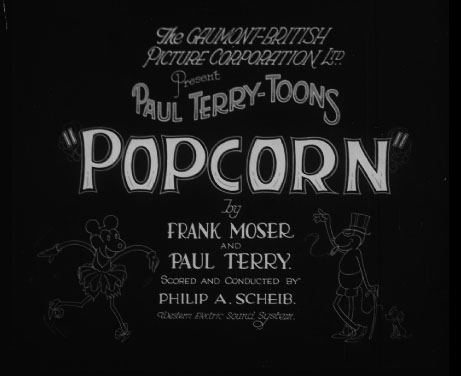
The weather’s getting much hotter lately, so let’s take a trip to the county fair in this week’s breakdown!
Released January 11, 1931, Popcorn was the 24th Terrytoon from Paul Terry’s studio. This particular entry is a rarity; this is one of the few early Terrytoons not included in CBS’ 1950s syndication package for television. This copy seen here is sourced from a British 35mm nitrate print acquired by Steve Stanchfield and Mark Kausler. Being sourced from such materials, the clarity of the picture and soundtrack are quite evident. The other Terrytoons analyzed are sourced from older transfers, before high-definition video resolution, but it’s fortunate for viewers, preferably those without a film stock collection, to have access to watch these at all.
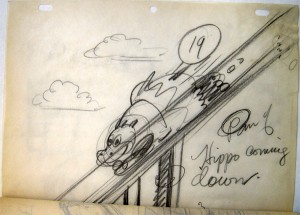 Head animator Frank Moser animates a large amount of footage in Popcorn, assisted by the unconfirmed “Sarka,” Larry Silverman, Connie Rasinski and Jose Carreon. Paul Terry animates one scene in the cartoon—the opening shot of a girl mouse singing “Ain’t We Got Fun?” Art Babbitt is assigned to extended scenes of cats enjoying the slide until a female hippo has her turn. He also animates the scene where a hippo attempts to ring the bell on the high striker. Jerry Shields contributes an amusing gag in which the bus heading to Rye Beach (a take-off on Coney Island) runs over a chicken, and its eggs, which surprisingly hatch after another bus smashes them.
Head animator Frank Moser animates a large amount of footage in Popcorn, assisted by the unconfirmed “Sarka,” Larry Silverman, Connie Rasinski and Jose Carreon. Paul Terry animates one scene in the cartoon—the opening shot of a girl mouse singing “Ain’t We Got Fun?” Art Babbitt is assigned to extended scenes of cats enjoying the slide until a female hippo has her turn. He also animates the scene where a hippo attempts to ring the bell on the high striker. Jerry Shields contributes an amusing gag in which the bus heading to Rye Beach (a take-off on Coney Island) runs over a chicken, and its eggs, which surprisingly hatch after another bus smashes them.
Larry Silverman assists Moser on the fireworks display, which reveals full-formed figures—including a dachshund, which morphs into a string of sausages— instead of its usual luminescent confetti. Silverman was an assistant animator during this period, and would work on and off for Terry in different stints. He arrived back around 1936 when Van Beuren closed its studio and remained until the 1947 strike, after which he migrated to Famous Studios. Silverman arrived back at Terry’s studio in the mid-‘50s, but left for Famous by the early ‘60s, ultimately spending the rest of his career at Filmation.
 Jose Carreon assisted Moser on the climactic scenes of the runaway lion carrying the boy mouse’s girlfriend in his mouth, and her boyfriend pursuing him by carousel horses. Originating from Guadalajara, Mexico, Carreon worked for Terry’s studio from about 1929 to 1944 as an animator. A 1934 Christmas card, from animator Cliff Auguston’s collection (at right), displays his versatility as a highly skilled artist. Carreon was subject to profiling due to his “tough-looking” appearance; according to George Gordon, while he and Carreon would walk along the streets of New Rochelle together, policemen would trail them, as if they were criminals.
Jose Carreon assisted Moser on the climactic scenes of the runaway lion carrying the boy mouse’s girlfriend in his mouth, and her boyfriend pursuing him by carousel horses. Originating from Guadalajara, Mexico, Carreon worked for Terry’s studio from about 1929 to 1944 as an animator. A 1934 Christmas card, from animator Cliff Auguston’s collection (at right), displays his versatility as a highly skilled artist. Carreon was subject to profiling due to his “tough-looking” appearance; according to George Gordon, while he and Carreon would walk along the streets of New Rochelle together, policemen would trail them, as if they were criminals.
Moser’s haunted house sequence is brief but is certainly eerie, in one of the rare instances of the early Terrytoons matching the Fleischer and Van Beuren studios in macabre strangeness. If they were made at either studio, in some instances, they would have kept the action inside of such a location to display their hallucinogenic imagery. Although it is uncertain, this could be the reason why this entry wasn’t included in the CBS television package. The network could’ve excised the sequence altogether, even if it would run an entirely short duration. (Moreover, the CBS version of 1931’s Canadian Capers clocks in at about three minutes and 55 seconds.)
Enjoy Popcorn, and maybe grab some while you’re at it!
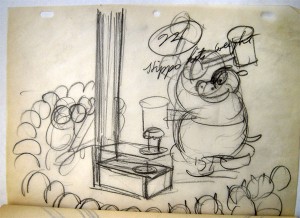


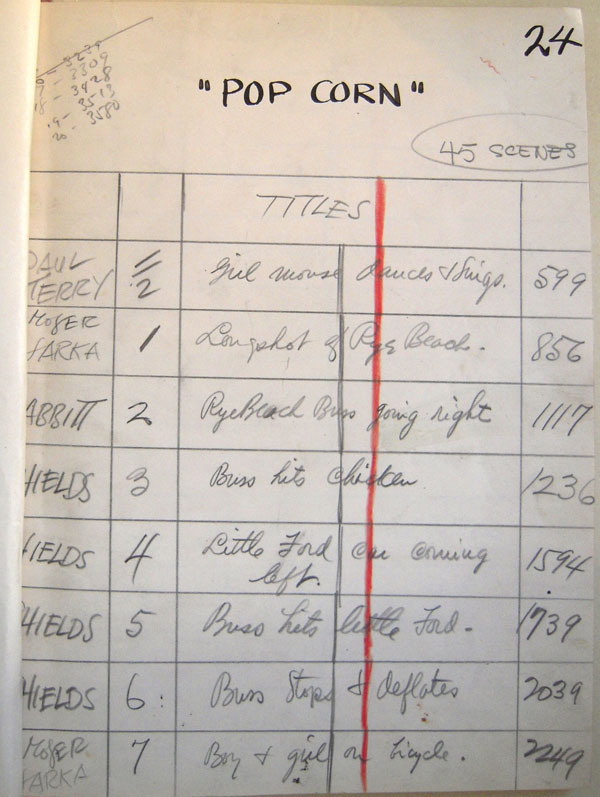
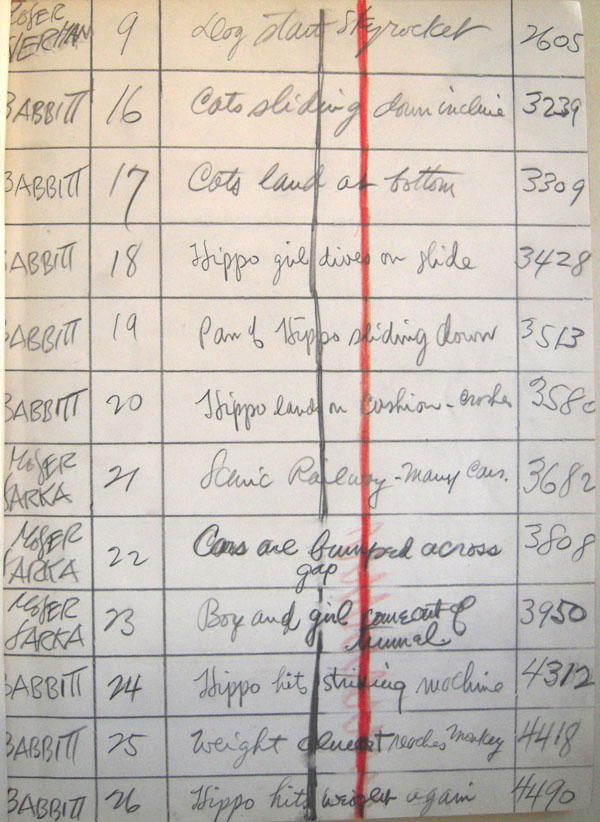


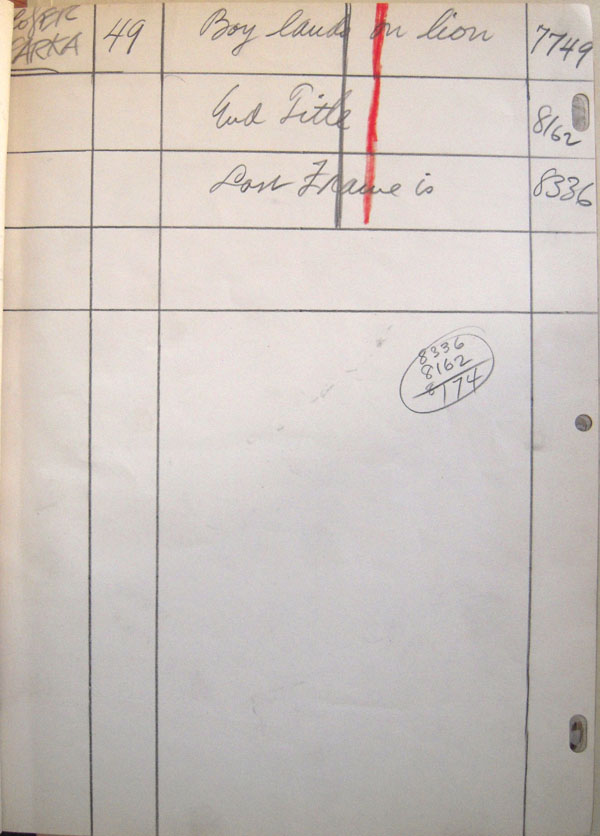
(Thanks to Charlie Judkins, Mark Kausler and Steve Stanchfield for their help.)


 DEVON BAXTER is a film restoration artist, video editor, and animation researcher/writer currently residing in Pennsylvania. He also hosts a
DEVON BAXTER is a film restoration artist, video editor, and animation researcher/writer currently residing in Pennsylvania. He also hosts a 
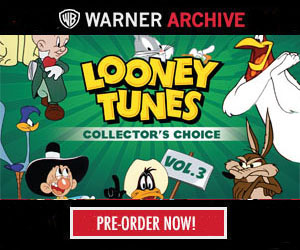


















































































There actually is a Rye Playland, located just northeast of New Rochelle and on Long Island Sound, which may have been the direct reference in this cartoon (Playland opened in 1928 and is still around, though I’m not sure if Terrytoons had moved to its New Rochelle home by the time this cartoon was made)
Particularly interesting is that the Westchester County (NY) Parks Board owns Playland … and the main reason that a government body decided to be involved in the amusement-park business was to encourage the greater industry to clean up its act as was only attracting the lower element, especially in terms of the games and concessions.
Terry’s studio moved to New Rochelle in 1934. At the time “Popcorn” was produced, they were operating in the Bronx.
This is a fine example as to why I like 1930’s cartoons of just about any studio. This is amazing stuff! Thanks for another terrific post!
Thanks Devon.
Of course a mouse beats up a lion. No explanation needed.
I see the Terry tradition of odd-n-quirky sound effects goes way back.
Fun!
And just what… are those mice… going to do… with that dead lion…?
I wonder if Paul Terry gave Phil Scheib a lecture after he used at least one popular song in this cartoon.
Although most of the amusement-park backgrounds are generic, at the :30 mark and 4:30 mark there is visible the very distinctive Art Deco tower that is still a landmark of Rye Playland. I think this must be one of the very few Terrytoons of this era to depict an actual local setting.
There goes another “mighty” mouse on Paul Terry’s resume. See Mr. Baxter’s earlier entry: https://cartoonresearch.com/index.php/terrytoons-go-west-big-boy-1931/
Wonderful article, Baxter! Examples of films and cartoons like these showing some East Coast and New York spirit (Rye Playland) reminds me why I love the Terrytoons so darn much.
I hope more Terrytoon drafts get revealed public to the future– even though MOMA only stores the 1930-1931 drafts, I woud like to see a late 30’s-40’s draft, if one does survive.
I have found only the first page of a draft for a 1938 Terrytoon, CHRIS COLUMBO JR., but that’s it.
If only the second page was around…
Beautiful work. No other studio had such longevity of consistent character design as Terrytoons. Over the years Bugs and Mickey evolved, but Deputy Dawg still has the same Terrytoon eyes and the weird little Terrytoon limp wristed run as his 1920’s forbears.
More than popcorn, a lot of cartoons from this era made use of the string of sausages/hotdog motif. Does anyone know if there was an arrangement between early animation studios and theaters to subliminally advertise their concessions stands?
My one objection – not enough cats.
I only count 67 in the rocket-launching scene. They could easily have squeezed in a dozen more.